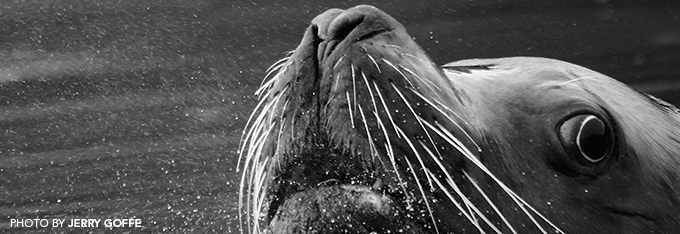The Holbrook Explorer

Photography in Alaska: Tips to Prepare Like a Pro
Photography in Alaska: Tips to Prepare Like a Pro
Though beautiful and largely untouched, Alaska’s vast terrain can make photography seem intimidating for the uninitiated. Jerry Goffe has visited the state more than 10 times, and its friendly people, extensive wildlife, scenic landscapes, and towering glaciers are just a few of the reasons he can’t resist going back for more. “Alaska is native beauty, plain and simple,” said the professional nature photographer. Here, Jerry shares his top four tips for travelers considering a photography tour to Alaska.
Tip 1: Bring the right clothing
It’s no secret that Alaska can get very cold, so it’s critical to pack wisely — you want to be comfortable enough to focus on getting great photos rather than bringing back the feeling in your fingers.
- Dress in layers. The weather can fluctuate throughout the day, so a flexible wardrobe will help prepare you for every situation.
- Wear light raingear to protect your warm clothing — there’s nothing worse than wearing a thick sweater that has become soaked through after a rainstorm.
- Wear waterproof boots to keep your feet dry while sloshing through water on the shore.
- Bring thin gloves. Unlike the thick mittens you might be considering, thin gloves (or gloves with removable fingers) will help you to feel the controls of your camera much more easily. Alternatively, you can place a self-adhesive circle made from felt (usually used to stop things scratching on tables) on the shutter release to feel where it is more easily.
Tip 2: Bring the right equipment
Jerry recommends that even the most experienced of participants limit the amount of equipment they bring.
“I used to bring a lot more with me than I do now,” Jerry said, “but technology of digital cameras and lenses has vastly improved over the past few years. These days, I only take three lenses: a wide angle, a telephoto, and either a fish-eye, an ultra-wide angle, or a semi-telephoto lens.”
Extra batteries are also a must-have. Jerry recommends keeping them in the pocket of your shirt or pants at all times, so if the battery in your camera gets too cold and loses power, you can easily replace it without any delay. Other essentials, Jerry notes, include a carrying case for extra memory cards and a strobe with a good beamer for photographing birds at a distances and filling in shadows.
To keep your camera functioning in the cold weather, he also suggests investing in a system such as a clear plastic sleeve to waterproof your lens, and keeping your camera out of its bag at night to allow it to adapt to the condensation.
Tip 3: Learn how to use your camera
Once you and your camera are both prepared for the weather, the next thing you can do to prepare is become more familiar with your camera.
In addition to understanding how to use standard modes such as manual, aperture, and shutter priority, there are some other key functions you can master to improve your photography experience. The reflective nature of glaciers and snow cause the meter in the camera to make the image darker than you really want it to be, so Jerry recommends learning as much as you can about exposure compensation (or come ready and willing to learn from your photography instructor).
It’s also a good idea to learn how to use the histogram rather than simply relying on the LCD for color. “The LCD can be adjusted for brightness, so it’s possible that what it displays is not an accurate representation of the actual photograph,” Jerry said
Tip 4: Get ready for the trip of a lifetime
Although photography in Alaska isn’t as simple as some other destinations, the Last Frontier State is a treasure for photographers and well worth the extra effort. Exploring by jet, single engine planes, and boats can result in photos of whales, orcas, eagles, gulls, oystercatchers, deer, moose, and more of the abundant wildlife species inhabiting the stunningly beautiful vegetation and mountains. Of course, the luckiest photographers will return with shots of the one creature that every visitor to Alaska wants to witness, albeit from a safe distance: bears. “Bears are the reason the 500 mm lens was invented,” Jerry chuckled.
When asked what his personal highlights have been over the years, it didn’t take long for Jerry to decide on the natural spectacle of the annual shorebird migration. “During early May, 6.5 million shorebirds fly over the beach as the tide comes in, feeding on the snails and worms in the sand,” Jerry said. “When the tide comes in, all of the birds fly together at the same time, moving like a ribbon to another section of the beach. You can walk right up to them to take photos, they don’t mind at all.”
As with all travel experiences, good preparation, a willingness to learn, and your trusty camera are the most essential ingredients for a successful photography trip to Alaska.
Thank you to Jerry Goffe for his generous contributions to this article. Visit his website at Nature Photo Works to see more of his work.
Originally published June 2013; updated August 2021.







